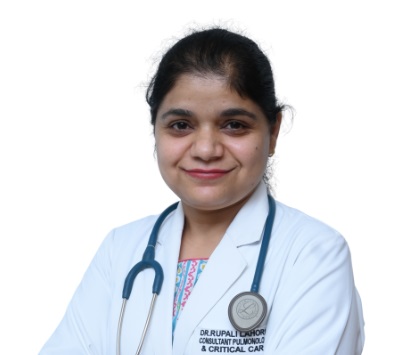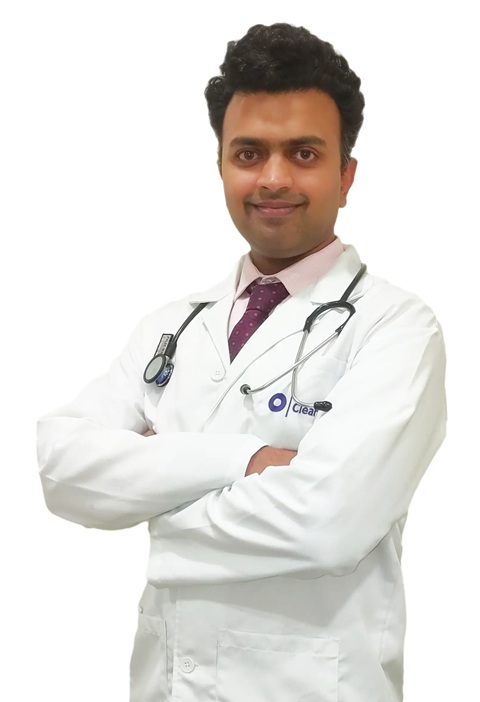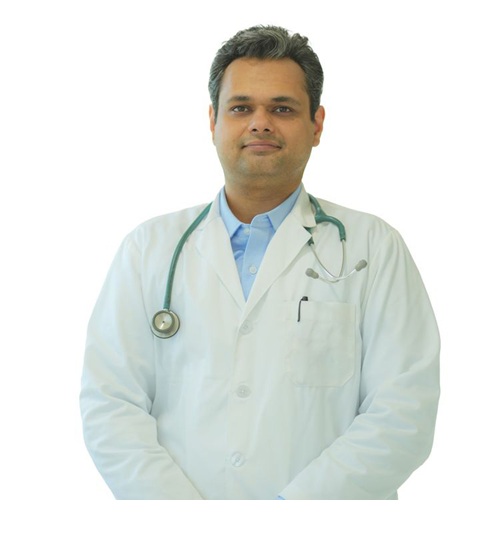A Guide to Bronchoscopy Test: Procedure, Cost, and Purpose
Dr. Aman Priya Khanna

Treatment Duration
20 Minutes
------ To ------45 Minutes
Treatment Cost
₹ 3,000
------ To ------₹ 35,000

Are you struggling with respiratory issues that have left you wondering about your lung health? If so, you might find relief and answers through bronchoscopy, a common diagnostic procedure.
This simple yet effective medical examination can provide valuable insights into various respiratory conditions. Let's explore how a bronchoscopy test serves as a crucial tool in healthcare and the intricacies of this technique.
Procedure Name | Bronchoscopy |
Conditions Treated | Respiratory infections, lung cancer, bronchitis |
Benefits of Procedure |
|
Treated By | Pulmonologist |
You can check Bronchoscopy Cost here.
What is Bronchoscopy?
Bronchoscopy meaning: A medical procedure that involves the examination of the airways and lungs. This is done by using a thin, flexible tube called a bronchoscope. This specialised instrument is typically equipped with a light and a camera.
During a bronchoscopy, the tube is usually inserted through the nose or mouth, passing through the throat and into the airways. The real-time images help healthcare providers assess the condition of the respiratory system and identify abnormalities.
Anatomy of the Lungs
The lungs, essential organs for breathing, play a vital role in supplying oxygen to our bodies while removing carbon dioxide.
Bronchi: The airway system begins with the trachea. It splits into two main bronchi – one for each lung. They branch into smaller tubes, known as bronchioles.
Bronchioles: Small air passages that extend from the bronchi and further divide within the lungs. They transport air to the alveoli.
Alveoli: Tiny, balloon-like sacs clustered at the end of bronchioles. This is where the crucial exchange of oxygen and carbon dioxide occurs with the blood.
Lobes: The right lung is divided into three lobes (upper, middle, and lower). The left lung has two lobes (upper and lower).
Pleura: The lungs are surrounded by this double-layer membrane. The space between the layers contains a fluid that reduces friction during breathing and acts as a shock absorber.
Physiology of the Lungs
Understanding the lungs' physiology demystifies the breathing process, highlighting the intricate mechanisms. It ensures that our bodies receive the oxygen necessary for optimal functioning.
Inhalation (Inspiration): The diaphragm contracts, expanding the chest cavity, and air rushes into the lungs.
Exhalation (Expiration): The pulmonary muscles relax, the chest decreases, and air is pushed out.
Gas Exchange: In the alveoli, oxygen moves into the blood, while carbon dioxide exits the blood into the alveoli for removal.
Surfactant Production: Specialised cells release surfactant, reducing surface tension in the alveoli and preventing their collapse.
Types of Bronchoscopy
This test allows your doctor to examine your airways and detect the potential issues. There are various types of bronchoscopy for diverse patient's needs:
Flexible (Fiberoptic Bronchoscopy): Utilises an adjustable tube with a fiberoptic light and camera for enhanced operability. It is Ideal for visualizing smaller airways and performing procedures such as biopsies and foreign body removal.
Rigid Bronchoscopy: Involves a stiff metal drain, allowing for better control and access to the larger airways. Suited for more complex interventions, such as the extraction of large foreign bodies or the treatment of certain tumors.
EBUS Bronchoscopy (Endobronchial Ultrasound): Combines the test with ultrasound imaging to visualize structures beyond the airways, particularly lymph nodes. It enables accurate biopsy targeting and staging of lung cancer.
Expert Doctors (10)
NABH Accredited Hospitals (10)


Conditions Diagnosed with Bronchoscopy
A bronchoscopy procedure is used to investigate various respiratory conditions. Here are some conditions that can be diagnosed through this test:
Lung Disease: The primary bronchoscopy purpose is to assess the severity of conditions like chronic obstructive pulmonary disease (COPD) and interstitial lung disease.
Tumour Detection: It is instrumental in locating and evaluating tumours within the airways of lungs. This aids in the diagnosis of lung cancer.
Chronic Cough Investigation: Bronchoscopy explores the cause of persistent coughs, whether they result from infections or underlying respiratory issues.
Infection Identification: The procedure is effective in checking for pulmonary infections, including pneumonia or bronchitis.
Pulmonary Fibrosis Assessment: It assists in analy the extent and nature of a condition involving lung tissue scarring.
Foreign Body Aspiration: Treatment is crucial for removing impure objects or inhaled material from the airways.
Bronchoscopy Indications
Bronchoscopy may be recommended for individuals facing various respiratory issues or potential lung abnormalities. The procedure is typically suggested for:
Individuals with persistent symptoms such as shortness of breath or chest pain.
People with suspicions or anomalies found in imaging studies.
Patients with a chronic cough that does not respond to standard treatments.
Individuals who experience frequent or severe respiratory infections.
People with known or suspected lung diseases.
Benefits of Bronchoscopy
Bronchoscopy is a valuable medical procedure with several benefits. It aids in both diagnosis and treatment of various respiratory conditions. Here are the key advantages:
Diagnostic Precision: Allows direct visualization of the airways, facilitating accurate diagnosis of respiratory conditions.
Tissue Sampling: Enables biopsies to obtain tissue samples for pathology analysis. This helps in the investigation of lung diseases, infections, or cancers.
Treatment Interventions: This includes removing foreign bodies, clearing airway blockages, or placing stents.
Localisation of Abnormalities: Helps pinpoint the place of tumors, lesions, or other issues within the pulmonary system.
Cancer Staging: Essential for assessing the extent of tumor involvement and evaluating nearby lymph nodes.
Evaluation of Unexplained Symptoms: Useful in investigating persistent cough, hemoptysis, or unknown respiratory signs.
Minimally Invasive: Generally considered a simple procedure compared to surgical alternatives, resulting in shorter recovery times.
Real-time Imaging: Aids in immediate decision-making during the process.
Before and On the Day of Bronchoscopy
Preparing for a bronchoscopy is important to ensure a successful procedure. Understanding the steps to be taken helps patients navigate the process and contribute to a positive outcome.
Before Bronchoscopy
Before bronchoscopy, patients are provided with essential instructions and preparations to ensure a smooth and effective procedure. The pulmonologist assesses the patient's fitness for bronchoscopy. The patient is advised to stop blood-thinning medicines.
The patient is informed about the whole process. This includes its duration, expected hospital stay, estimated cost, and insurance formalities, if applicable.
Parameter | Pre-Requisites |
Pre-op Assessment |
|
Risk Evaluation |
|
Anaesthesia Selection | Anaesthesia only in case of Rigid Bronchoscopy For others: Sedation (may be supplemented by topical anaesthesia) |
Fasting | Avoid food and liquids for approximately 4 to 8 hours |
On the Day of Bronchoscopy
When the day of bronchoscopy comes, patients arrive at the medical facility, where pre-procedural preparations take place. Details of the patient's last meal and diet are recorded. Specific medications, if required, are administered with a sip of water.
Parameter | Pre-requisites |
Consent | Mandatory |
Surgical Preparation |
|
Physical Evaluation | Vitals are checked (Heart rate, blood pressure, oxygen saturation, etc.) |
IV Line | Intravenous (IV) line for medication (for relaxation) |
Anaesthesia Administration | Anaesthesia in case of Rigid Bronchoscopy For others: Sedation (may be supplemented by topical anaesthesia) |
Bronchoscopy Procedure
The bronchoscopy procedure typically takes 30 to 60 minutes. It involves a series of steps to ensure a thorough examination of the respiratory system, including:
Positioning: The patient is positioned comfortably on the operating table, usually lying on their back.
IV Line Administration: A sterile intravenous (IV) is established to supply medications and fluids throughout the procedure.
Sedation: Most of the time, the patient is awake during the process. They will be put on tranquilizers (sedative) to help them calm down.
Cleaning and Draping: The surgical site (typically the nose or mouth) is sterilized.
Bronchoscope Insertion: A flexible tube with a light and camera is gently inserted through the nose or mouth.
Airway Examination: The bronchoscope is advanced through the trachea and bronchi, allowing visualisation of the airways and lung structures.
Biopsy or Intervention (if needed): Tissue samples (biopsies) may be collected for further examination.
Monitoring Vitals: Continuously checking for vital signs, including heart rate, blood pressure, and oxygen saturation, is maintained.
Post-Procedure Care: Once the bronchoscopy is complete, the bronchoscope is carefully removed.
After Surgery and Recovery
The post-surgery phase is a critical period, where patients transition from the procedure to recovery. Understanding what to expect during this time is key to a successful healing process.
Expectations after Bronchoscopy
Post-discharge, patients might encounter common side effects. Here’s what to expect:
Mild Symptoms: Individuals may encounter mild sore throat, hoarseness, cough, or muscle aches.
Symptomatic Relief: Alleviating measures such as warm water gargles and throat lozenges (medications that dissolve slowly in the mouth) can help minimise discomfort.
Care Instructions: Adequate rest, hydration, and gradually resuming regular activities are advised.
Recovery Process in Hospital
The patient is monitored until they are fully awake and stable. Depending on the nature of the procedure and anaesthesia/sedation used, they may be discharged the same day or kept for further observation.
The nursing staff will closely observe the patient for any signs of complications or adverse reactions to the procedure.
Post-procedure discomfort, such as a sore throat or mild chest discomfort, is common.
The patient will be provided with clear instructions regarding diet, activity, and any necessary medications.
First Follow-up Appointment
The patient will have a scheduled follow-up meeting to assess recovery progress and discuss any concerns.
The healthcare provider will review the results and examine any findings or necessary treatment plans.
Any lingering symptoms or complications can be addressed during this appointment.
Further diagnostic tests or interventions may be recommended based on the initial bronchoscopy report.
Bronchoscopy Report Interpretation
Interpreting a bronchoscopy report is crucial for understanding the findings and determining appropriate medical management. The result typically includes details about the procedure, observations, and any interventions performed.
Table outlining normal and abnormal findings in a bronchoscopy report:
Aspect | Normal Findings | Abnormal Findings |
Airway Appearance | Smooth and patent airways without visible abnormalities. | Presence of tumours, strictures, or abnormal growths. |
Secretions | Clear or slightly cloudy secretions. | Thick, coloured, or excessive secretions indicating infection or other issues. |
Structures and Anatomy | Clear visualisation of trachea, bronchi, and bronchioles. | Anomalies such as bronchial stenosis or anatomical abnormalities. |
Biopsy Results | Normal tissue with no evidence of malignancy. | Presence of cancer cells, granulomas, or other abnormal tissue. |
Foreign Bodies | Absence of foreign bodies. | Identification of aspirated material or foreign objects. |
Lymph Nodes (EBUS) | No abnormal enlargement or pathology in lymph nodes. | Enlarged or abnormal lymph nodes, potentially indicating cancer staging. |
Note: The interpretation of a bronchoscopy report requires clinical expertise, and the significance of findings may vary. Always consult with a qualified healthcare professional for a thorough analysis.
Risks and Complications of Bronchoscopy
While bronchoscopy is a generally safe and commonly performed procedure, it carries potential risks and complications. Understanding these factors is crucial for informed decision-making.
There may be minimal bleeding at the biopsy site, which is usually self-limiting.
Bronchoscopy is performed under sterile conditions. However, there is a slight risk of introducing infections into the respiratory system.
The procedure may cause air to leak into the space between the lung and chest wall.
Temporary irritation of the vocal cords or airways.
Rarely, there may be injury to the bronchial walls.
When to consult a doctor?
In the event of consistent symptoms or concerning developments, it's crucial for patients to seek medical care. You should contact a doctor in case of:
A fever persists beyond 24 hours.
Escalating chest pain.
Any challenges or changes in breathing.
Coughing up more than a few tablespoons of blood.
Continuous bleeding that may be excessive at the biopsy site.
Sustained nausea or vomiting.
Signs of infection (increased redness or swelling).
Risks of Delaying Bronchoscopy
Delaying a bronchoscopy, when recommended by a doctor, may pose certain risks, as the procedure is often critical.
Conditions such as lung cancer, infections, or inflammatory disorders may progress.
Missed opportunities for initiating prompt and targeted treatments.
Specific conditions, if left untreated, may lead to complications such as respiratory failure.
Delaying the procedure may reduce its effectiveness.
Cost of Bronchoscopy
The bronchoscopy test price can vary significantly depending on various factors. Here are the estimated costs:
Bronchoscopy | Cost |
Minimum | ₹ 7,000 |
Maximum | ₹ 18,000 |
Factors that may affect the cost of bronchoscopy include:
Type of Bronchoscopy: The specific kind of bronchoscopy performed (flexible or rigid bronchoscopy) can impact the overall cost.
Hospital or Facility Charges: The choice of the medical centre can affect the total price of the procedure.
Geographic Location: The cost of medical procedures can vary based on the city in India and the associated expenses of living in a particular region.
Health Insurance: The extent of coverage and the patient's financial responsibility, including copayments and deductibles, can influence out-of-pocket prices.
Pre-Procedure Examination: Some patients may require additional tests, such as imaging studies or laboratory tests, which can add to the final bill.
Surgeon's Fees: Charges taken by the professional can contribute to the total cost.
Follow-Up Care: The expenses can be related to the recovery room and any necessary medications.
Takeaway
Bronchoscopy stands as a valuable tool in the field of respiratory healthcare. The test offers diagnostic insights and therapeutic interventions. It is a well-established and often routine procedure that aids in accurate investigation.
At HexaHealth, we recognize the importance of accessible and informed healthcare. Our platform serves as a bridge, connecting individuals with reliable doctors who specialise in bronchoscopy. Get in touch!
Frequently Asked Questions (FAQ)
What is a bronchoscopy?
Bronchoscopy is a medical procedure that involves the insertion of a tube with a light and camera (bronchoscope). It goes through the nose or mouth and into the airways to visually examine the trachea, bronchi, and lungs.
What does a bronchoscopy test involve?
A bronchoscopy test involves the insertion of a thin, flexible tube with a light and camera through the nose or mouth. This procedure aids in the diagnosis of respiratory conditions, facilitates biopsies, and more.
What are the benefits of bronchoscopy?
Bronchoscopy offers valuable benefits in respiratory healthcare by allowing direct visualisation of the airways. It facilitates accurate diagnosis of various lung conditions such as infections, tumours, and inflammatory disorders.
What are the indications for bronchoscopy?
Bronchoscopy is indicated for various respiratory conditions, including:
Persistent cough
Hemoptysis (coughing up blood)
Unexplained lung infections
What is fiberoptic bronchoscopy?
Fiberoptic bronchoscopy is a medical procedure used to examine the airways and lungs. It employs a flexible bronchoscope equipped with a fibre optic light source and camera. This allows for direct visualisation.
What is rigid bronchoscopy?
Rigid bronchoscopy is a test in which a rigid metal tube, known as a bronchoscope, is used to examine the airways and lungs. This technique allows for direct visualisation of the respiratory system.
What is the purpose of EBUS bronchoscopy?
EBUS (Endobronchial Ultrasound) bronchoscopy is employed to visualise and biopsy structures adjacent to the airways. By combining bronchoscopy with real-time ultrasound imaging, EBUS allows for precise sampling, staging, and diagnosis.
How should I prepare for a bronchoscopy?
To prepare for a bronchoscopy, one will typically be advised to fast for a specified period before the procedure, usually for 4 to 8 hours. Patients should follow the doctor’s guidance on whether to continue or adjust their medication routine.
How is a bronchoscopy procedure performed?
During a bronchoscopy, a tube called a bronchoscope is inserted through the nose or mouth and guided into the airways. This allows the healthcare professional to visually examine the respiratory system.
Will I be awake during the bronchoscopy?
The level of consciousness during a bronchoscopy depends on the type of anaesthesia used. In most cases, conscious sedation may be administered, keeping one in a semi-awake state.
What is the price of a bronchoscopy test?
The average expense associated with bronchoscopy is ₹ 12,000. The cost of bronchoscopy ranges from ₹ 7,000 to ₹ 18,000. It is essential to understand that the prices are affected by several factors including locality, type of hospital or clinic, the pulmonologist’s experience and skills, among many others.
Is bronchoscopy a painful procedure?
Bronchoscopy is generally not a painful procedure as it is often performed under sedation or anaesthesia. While some individuals may experience mild discomfort, the overall goal is to minimise any pain or distress.
How long does a bronchoscopy take?
A bronchoscopy typically takes approximately 30 to 60 minutes to complete. The duration may vary based on the nature of the procedure and the individual patient's health condition.
Are there any risks of bronchoscopy?
Yes, bronchoscopy, like any medical procedure, carries certain risks. Potential complications may include:
Bleeding
Infection
Bronchospasm
Pneumothorax (rare)
Can bronchoscopy detect lung cancer?
Yes, bronchoscopy is a crucial diagnostic tool for detecting lung cancer. It allows direct visualisation of the airways, enabling the identification of suspicious lesions. Also, the collection of tissue samples (biopsies) for pathological examination can confirm or rule out lung cancer.
How soon can I resume normal activities after a bronchoscopy?
After a bronchoscopy, it's advisable to take it easy for the rest of the day. Most individuals can typically resume normal activities the day after the procedure. It's essential to follow your healthcare provider's specific post-procedure instructions for a smooth recovery.
When will I receive the results of the bronchoscopy?
Typically, you can expect to receive the results of your bronchoscopy within 1 to 3 days after the procedure. The exact timeline may vary based on the specific tests performed and the complexity of the analysis.
References
All the articles on HexaHealth are supported by verified medically-recognized sources such as; peer-reviewed academic research papers, research institutions, and medical journals. Our medical reviewers also check references of the articles to prioritize accuracy and relevance. Refer to our detailed editorial policy for more information.
- Bronchoscopy [Internet]. www.hopkinsmedicine.org. 2022.

- EBUS [Internet]. UC San Diego Health. [cited 2024 Feb 1].

- Lungs: Location, Anatomy, Function & Complications [Internet]. Cleveland Clinic.

- Roth E. Bronchoscopy [Internet]. Healthline. Healthline Media; 2012.

- Bronchoscopy [Internet]. 2019.

- Mayo Clinic. Bronchoscopy - Mayo Clinic [Internet]. www.mayoclinic.org. 2019.

- Bronchoscopy and Bronchoalveolar Lavage (BAL): MedlinePlus Medical Test [Internet]. medlineplus.gov. [cited 2024 Feb 1].

- Mayo Clinic. Bronchoscopy - Mayo Clinic [Internet]. Mayoclinic.org. 2019.

- Chadha M, Kulshrestha M, Biyani A. Anaesthesia for bronchoscopy. Indian Journal of Anaesthesia. 2015;59(9):565.

- Bronchoscopy Information | Mount Sinai - New York [Internet]. Mount Sinai Health System. [cited 2024 Feb 1].

Last Updated on: 5 March 2024
Reviewer

Dr. Aman Priya Khanna
MBBS, DNB General Surgery, Fellowship in Minimal Access Surgery, FIAGES
14 Years Experience
Dr Aman Priya Khanna is a well-known General Surgeon, Proctologist and Bariatric Surgeon currently associated with HealthFort Clinic, Health First Multispecialty Clinic in Delhi. He has 14 years of experience in General Surgery, Proctolo...View More
Author

She has extensive experience in content and regulatory writing with reputed organisations like Sun Pharmaceuticals and Innodata. Skilled in SEO and passionate about creating informative and engaging medical conten...View More
Bronchoscopy in Top Cities
Bronchoscopy Cost in Top Cities
Other Treatments in Your City






















